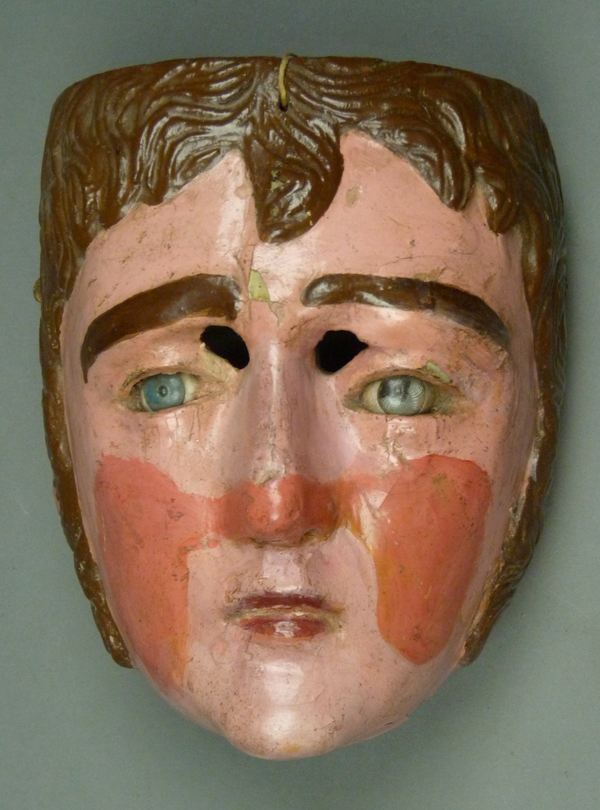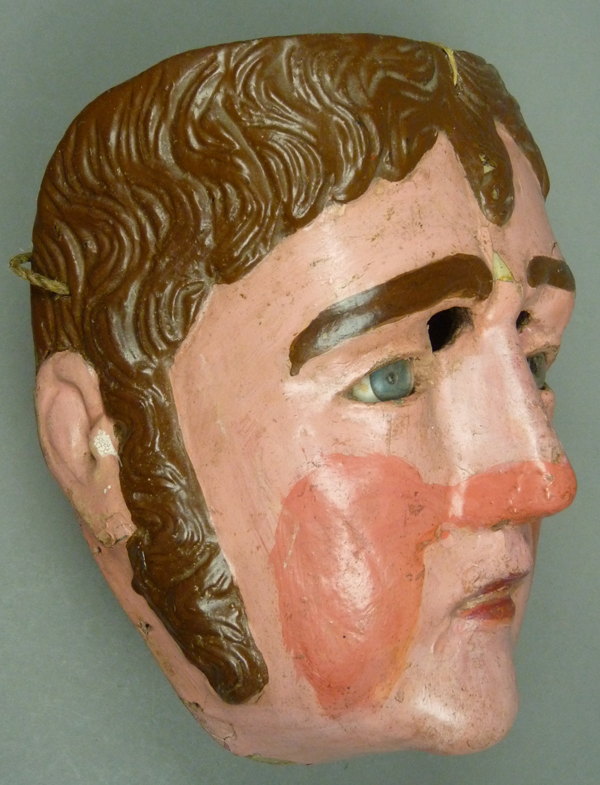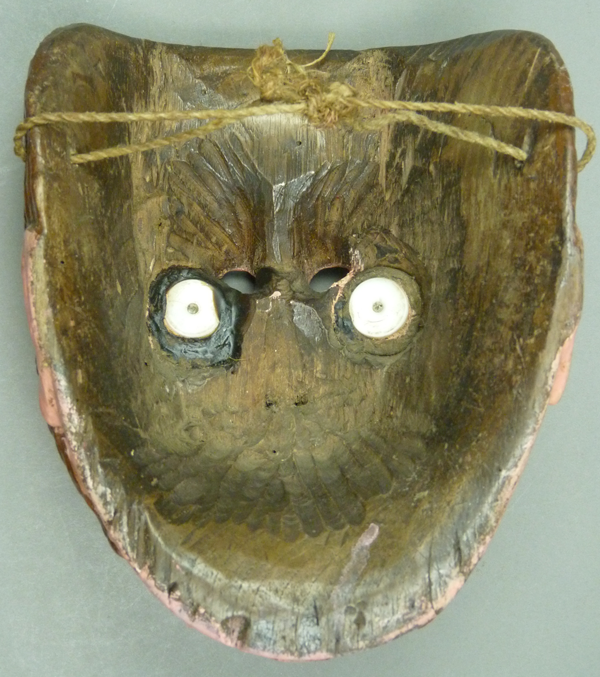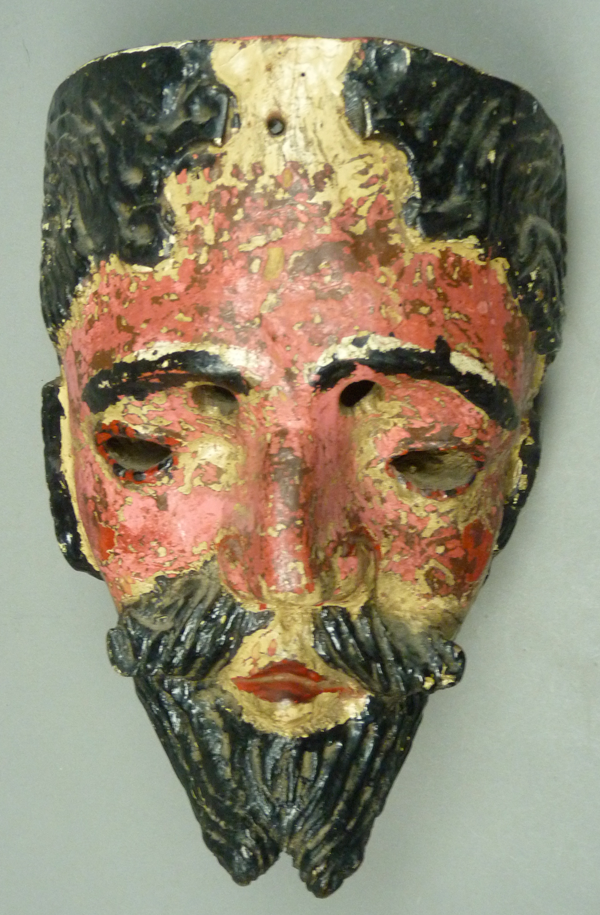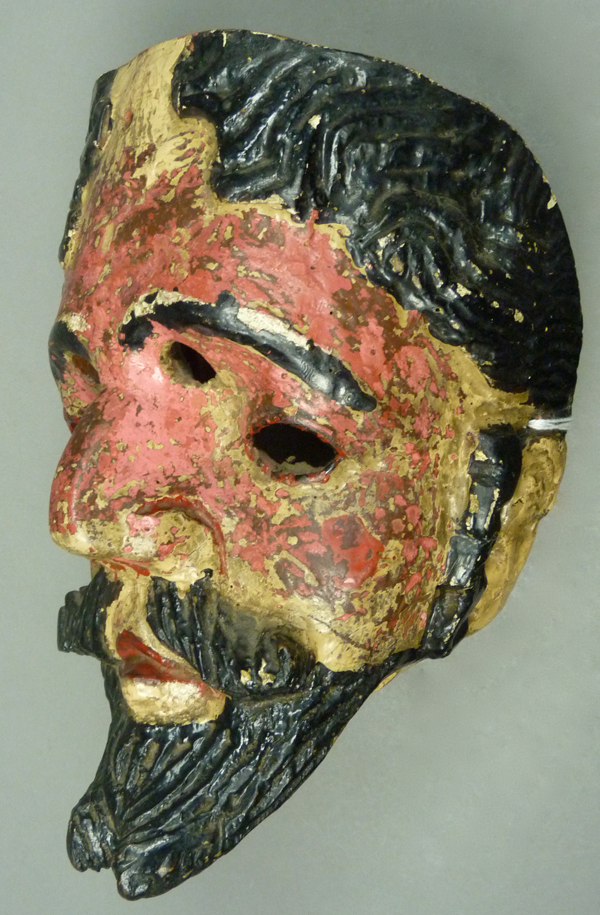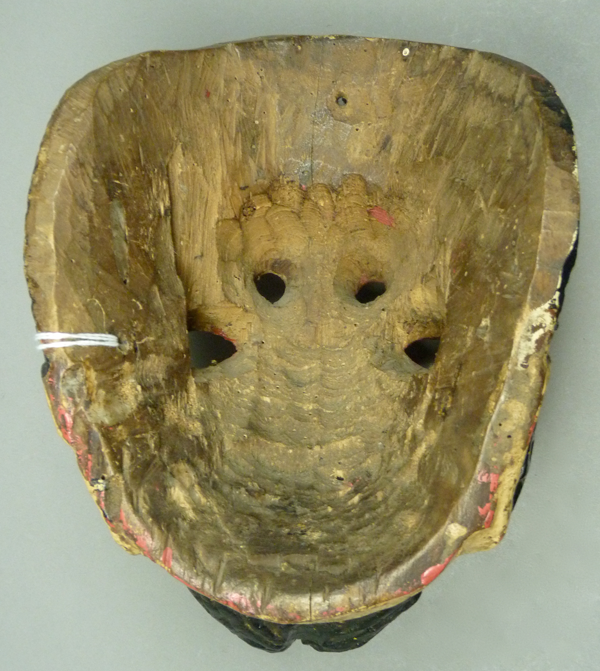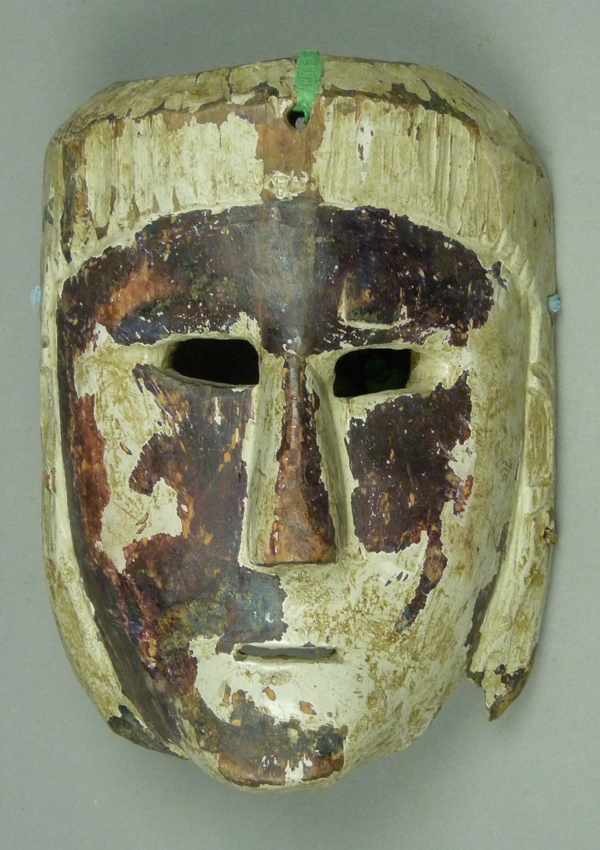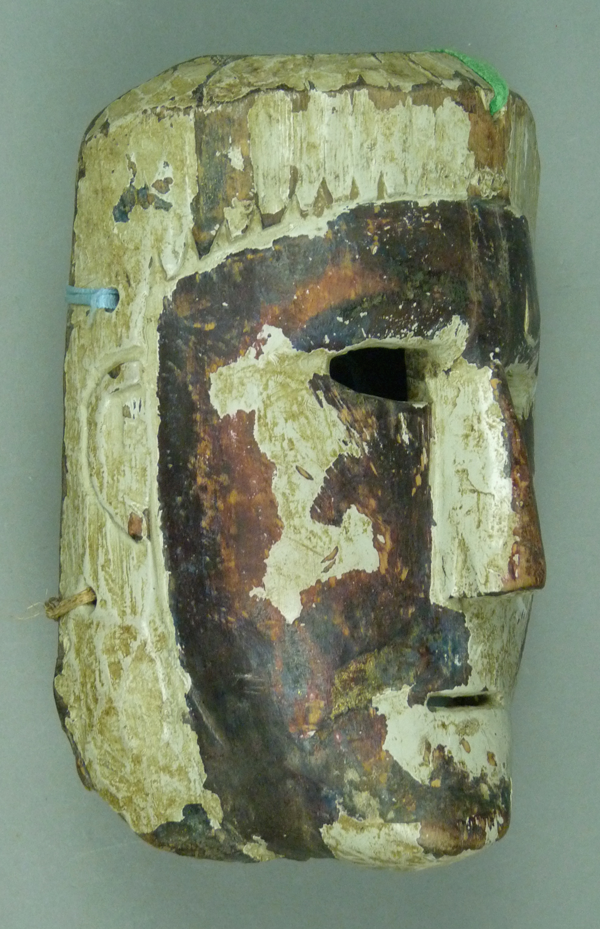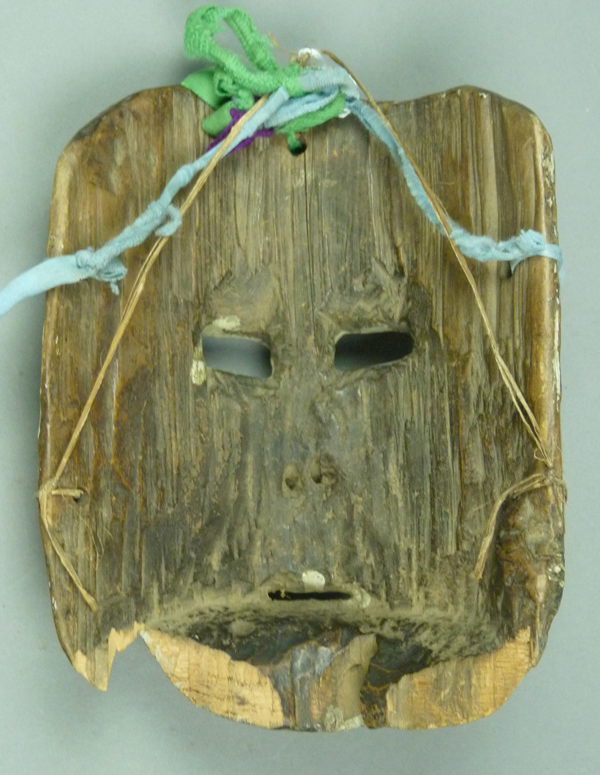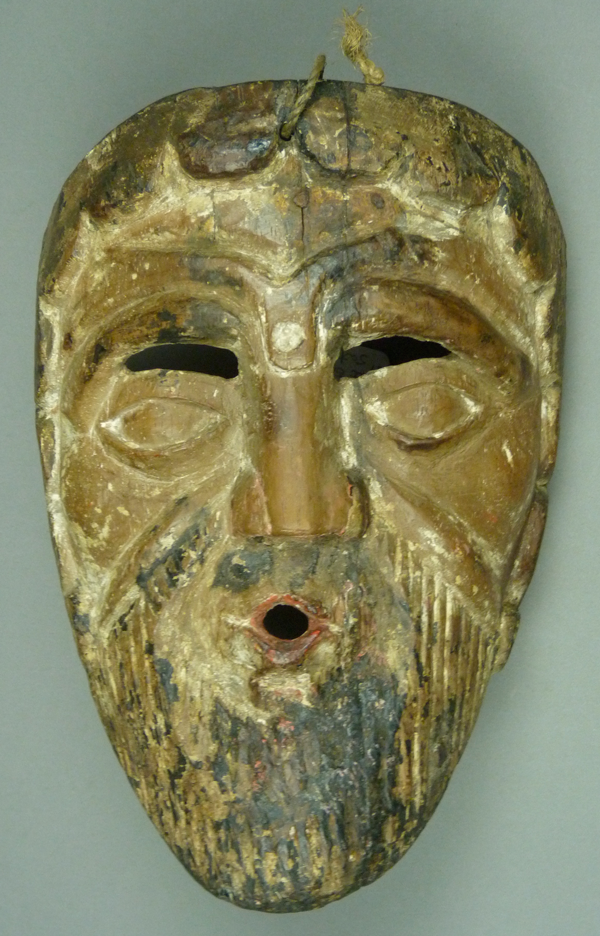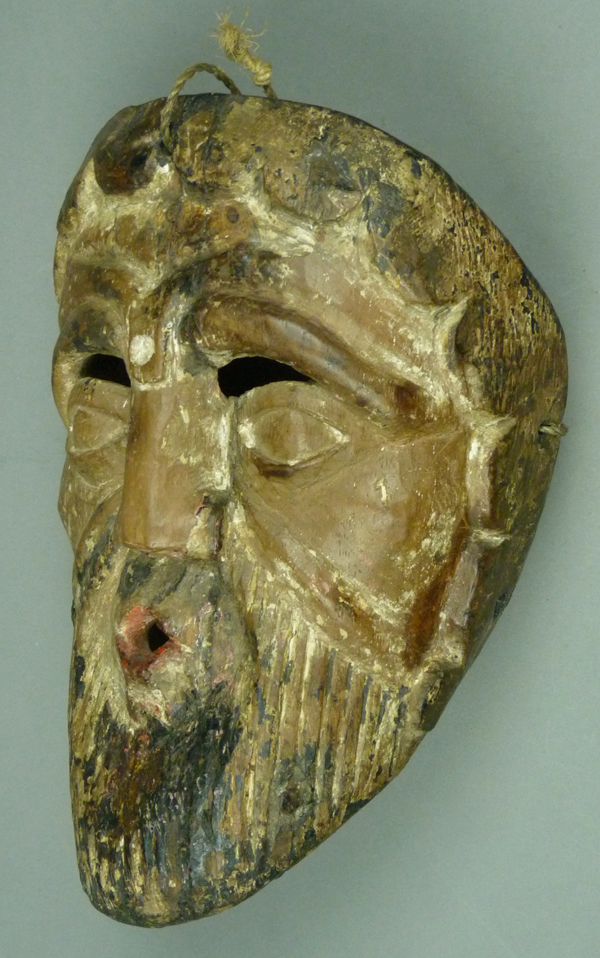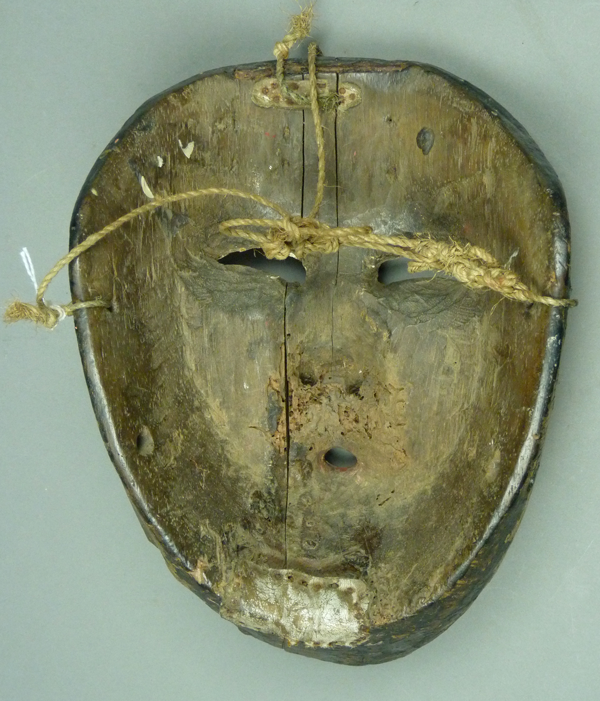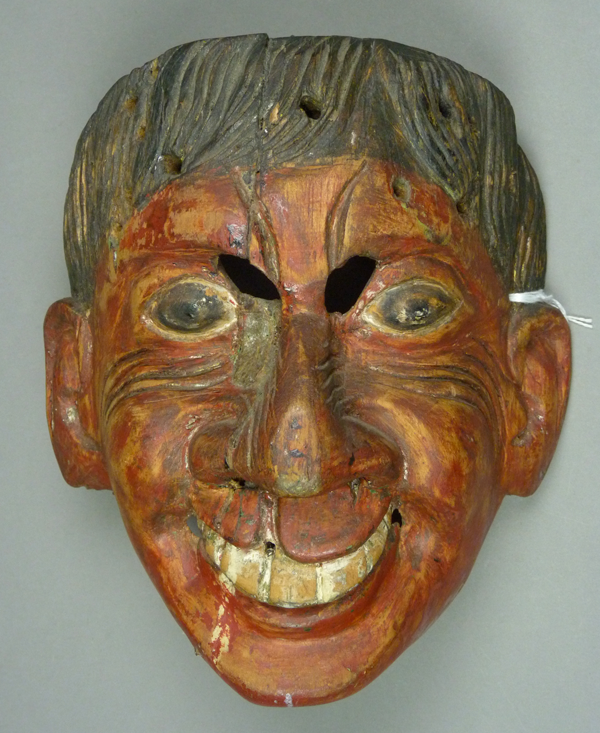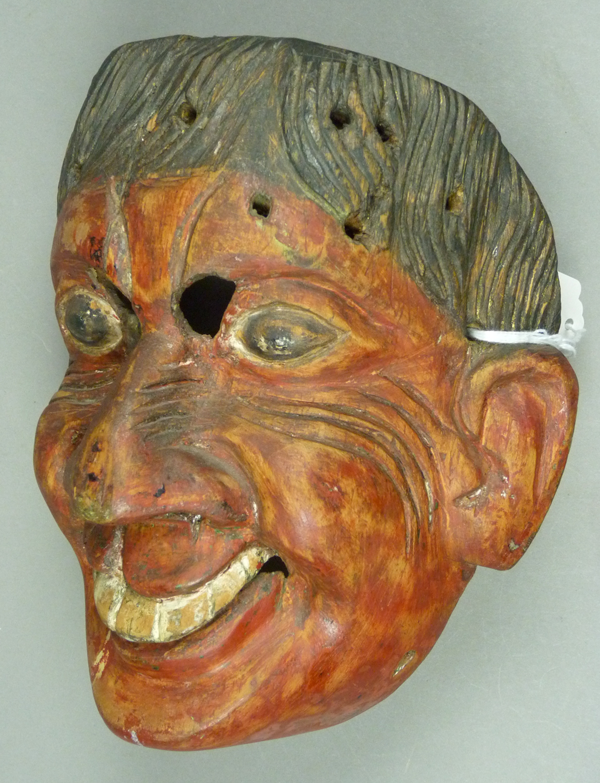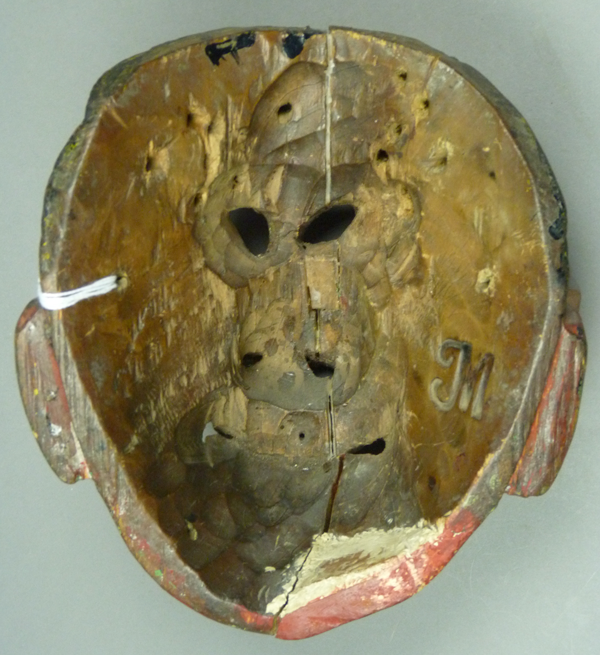Last week we looked at a number of masks that could have been worn in either the Toritos or the Conquest dances in Guatamala. Today I will discuss just a few more masks from the Conquest dance that are less likely to have appeared as Vaqueros in the Toritos dance. These fall into two groups—those masks of Conquistadors from areas that have a distinctly different design from the Toritos masks and those masks that represent the Quiché Indians who oppose Alvarado and the Conquistadors in that dance. I will begin with a mask worn by Alvarado’s adjutant, Don Pedro Portocarrero. I got this mask from Spencer Throckmorton in 1996; he reported that it was from Coban.
This mask is carved in an older style that one finds on earlier Moor masks. Rather than the stylized sideburns carved in high relief that you saw on the Alvarado mask in last week’s post, these sideburns were carved more artfully in lower relief. There are masks that look something like this one in various Guatemalan dances, and sometimes these are worn by a female figure. The hairline on this mask is masculine, but many similar masks have gender ambiguous hairlines. There are other masks with these features that are obviously male, because they have a mustache and/or a goatee. The second mask in last week’s post was like that.
This mask is 8 inches tall, 6 inches wide, and 3½ inches deep. Note the small holes that ring the back edge of the chin; these were for the attachment of a cotton ruffle. We will see this feature again on other masks from Coban.
I believe that the plastic eyes on this mask are a commercial product rather than hand made. They have been installed in the usual manner with black wax. The wear on the back of this mask is obvious.
The rest of the masks in today’s post were worn by Indian warriors in the Conquest dance. First I will show one of these that is not very different from the Conquistador masks from last week, except for the paint and a few additional details. Later others will follow that will seem quite different because these are probably the masks of brujos, of Indian sorcerers. Here is a large and impressive mask of an Indian. I obtained this mask from Spencer Throckmorton in 1994.
Maybe this was once the mask of a Conquistador, but there is no sign of any gold paint in the hair and although the mask has been repainted in various shades, all of them are compatible with a Guatemalan mask of an Indian. Given the noble and unusual hairline and the size, I wonder if this was worn by Rey Quiché, the Indian King in the Conquest dance. In Guatemalan Masks: A Portfolio (Brown, 2009, pages 12-13), one sees two masks for that character that are very similar to this one in size and design. This mask is 9½ inches tall, 6¼ inches wide, and 5 inches deep. In a note on page 104 about those masks on pages 12 and 13, Brown shares his observation that the Rey Quiché character in Rabinal “usually has a bald forehead.” This mask lacks the toothy grimace that we have seen on masks of Alvarado.
It is an odd thing that many of the Indian masks for the Guatemalan Conquest dance have such European features, as in this case; some even have bright pink skin and golden hair.
This mask demonstrates staining consistent with extensive use.
In contrast to the last mask, which was so large and carefully carved, our next mask is small, crudely carved, and primitive in design. With its old maroon paint that was later painted over with white, it may have been an Indian. It has long sideburns like the Don Pedro Portocarrero mask and one can hardly tell whether it represents a male or a female face. To make matters worse it is broken. I purchased this mask from Spencer Throckmorton in 1995.
This mask is just 6¾ inches tall, 5 inches wide, and 3½ inches deep.
The hair or sideburns extend down the sides of the face to the chin. There are relief carved ears of a simple shape.
The back of this small mask is dark from use, and there is a marked contrast between the color of the back compared to the color of the broken edges.
There is an Indian figure in the Conquest dance that is said to represent a Brujo (a sorcerer, conjurer, or shaman); his name is Aj’itz. Brown (2009, page 1) has observed that not every red-faced mask without horns is Aj’itz and not every Aj’itz has a red face. That is good to know because I am convinced that the next mask represents Aj’itz, but there is no sign that this mask was ever red.
I bought this mask from Spencer Throckmorton in 1999. Spencer told me that this was from the Conquest dance and that the round hollow spot on the forehead represents the shaman’s third eye. Aj’itz is the shaman in the Conquest dance. As one can easily see, this mask originally had a white face with black hair and beard. Note the blowing mouth, another unusual feature. Brown says nothing about these aspects in his books, but Pieper (2006, pages 183-184) shows a series of Aj’itz masks (with red faces) that have spherical projections on the center of the forehead as part of a more elaborate design.
The scalloped hairline is unusual. I wish that I knew more about this blowing mouth. The mask is 9 inches tall, 6¼ inches wide, and 3 inches deep.
The back is quite dark, reflecting many years of use. There are vertical cracks and two leather patches have been applied to hold the mask together.
The last mask in this post is apparently another brujo, another shaman. When I got this mask from Spencer Throckmorton, in 1995, he pointed out that this mask is very unusual, because it has a harelip. Spencer was told that a harelip on a mask is a sign that the mask represents a brujo, in this case the Brujo Aj’itz. This mask does have the red face that is ordinarily associated with Aj’itz.
Here is a good view of the harelip. Also notice that that there are many large holes in the upper part of the mask, as if something was attached there, maybe some sort of headdress? In one of Joel Brown’s books, Guatemalan Masks: A Second Portfolio, there are dance photos of Aj’itz on pages 8, 14, and 19 that show him wearing an elaborate headdress. Parenthetically, several of those Aj’itz dancers wore pink-faced masks, reflecting Brown’s comment that this dancer’s mask isn’t necessarily red.
This mask is 8½ inches tall, 7¼ inches wide, and 3½ inches deep.
Looking at the back one sees that this is a mask that has split in two and then was glued back together. This is another old mask that has a morería mark—the conjoined letters JAM, which stand for José Alejandro Tistoj Mazariegos, who lived from 1909 until 1986. This is a 20th century mask.
Next week I will discuss the Moros y Cristianos dance.

